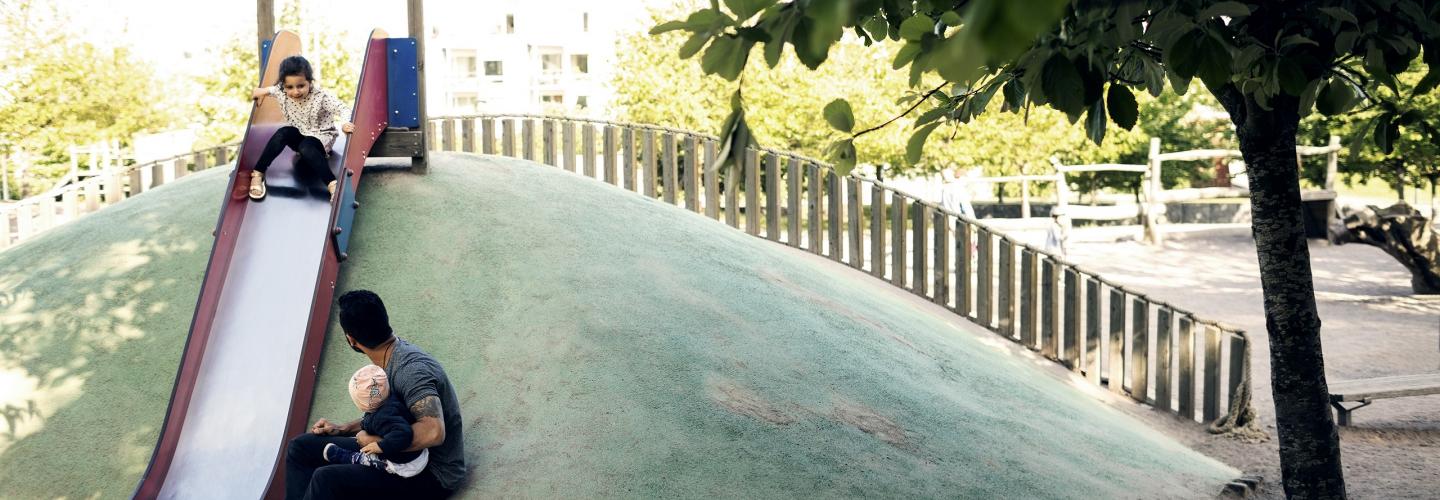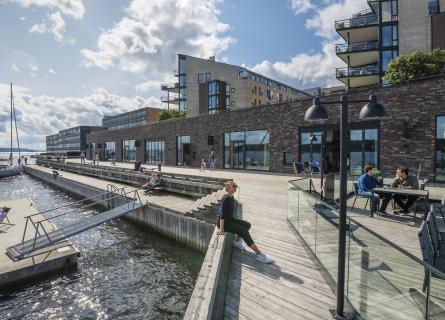
Children's housing first
Combating homelessness through social innovation
Homelessness among families with children is an inherent problem in both developed and developing countries. In response to rising homelessness among children in developed countries and in Sweden specifically, AFRY has initiated the pilot project, Children’s Housing First. The project is funded by Sweden’s innovation agency, Vinnova, and gathers representatives from the housing industry, politics, and academia, to develop and implement solutions to combat homelessness and housing inequality.
Families experience homelessness for various reasons, one of the primary reasons being a shortage of affordable housing. Sweden, a social welfare country, has struggled with residential instability and growing homelessness for years, in part due to the lack of a cohesive national homelessness strategy. Homelessness affects children’s health and social development and limits their opportunities for higher education and future employment. 1
Since the incorporation of the UN Convention on the Rights of the Child into Swedish law, AFRY has taken action to address this critical issue, both locally and nationally, through the establishment of a knowledge alliance in Malmö, which is located in the Skåne region, the southern part of Sweden. AFRY has teamed up with Malmö University, and the non-profit organisations Save the Children Sweden and Stadsmissionen in Skåne. The ambition is to shape a new model that can guarantee housing for families with children, increase equality, and reduce the societal costs associated with homelessness.

What brought us together was the desire to find solutions to transform the lives of families suffering from homelessness, since every child has the right to the best possible start in life. By combining Malmö University’s expertise and the nonprofit organisations’ detailed knowledge of the target group together with AFRY’s project control and management, we wanted to develop solutions with a practical application, as well as raise our own competence in this issue.
- Hannah Wadman, Urban Planner and Project Manager at AFRY
An innovative solution that breaks traditional patterns
Despite Sweden’s extensive welfare system, homelessness continues to be a critical issue. It has traditionally been viewed as a social problem, however, families suffering from structural challenges such as housing shortages and unemployment are increasingly being added to the homeless as a group. Statistics presented by the National Board of Health and Welfare showed that 11,400 parents and 15,000 children were homeless in 2017. The number of homeless families increased by more than 1,900 from 2011 to 2017. 2 Unfortunately, current Swedish housing policies are not adjusted to the structural causes of homelessness. Especially since the Swedish housing market has become very market-driven, making it nearly impossible for low-income earners to secure affordable housing. Additionally, the social safety net is not able to catch everyone, thus forcing families suffering from structural homelessness to live in insecure housing situations.
"One third of homeless families do not have specific needs to address beside permanent housing. We wanted to find a solution to this type of homelessness irrespective of the cause, since the definition of homelessness as structural or social is often arbitrary. There is a need to support families who have ended up homeless, regardless of the reason", says Hannah Wadman.

In 2020 the project team held four workshops with relevant social actors, such as non-profit organisations, municipalities, private property owners, and governmental agencies. The ambition was to evaluate existing tools and methods and develop new models and solutions. Previous shortcomings in social housing have been a product of the lack of cooperation between various stakeholders.
"The purpose of the project has been to create a cross-sectoral partnership, where access to expertise, knowledge and resources can be shared and utilised to counteract homelessness among families with children, says Hannah Wadman.
The rise of urbanisation presents a growing need for adequate housing solutions. A global survey found that out of 200 cities across the world, 90% were considered to be unaffordable to live in. With today’s high housing prices and rapid urbanisation, housing has become the most concerning problem for people – with less access to safe, secure, and sustainable homes. 3
The difference between structural and social homelessness
Municipalities divide homelessness into structural and social homelessness. Housing shortages, divorce and unemployment are factors related to structural homelessness, while social homelessness often stems from mental illness and substance abuse.
Our idea is to work with preventive measures and to guarantee housing to families with children from day one.
- Hannah Wadman, Urban Planner and Project Manager at AFRY
Affordable housing the foundation for combating long-term homelessness
The goal of the Children’s Housing First project has been to develop a model inspired by the previously successful Housing First model and the Finnish Y-Foundation model. These models, which mainly focuses on people suffering from social homelessness, consider social housing a starting point rather than an end goal, where effective social services and thoughtful state-sponsored production of accommodation can lift people out of homelessness. These initiatives have shown positive results, not only in higher housing retention rates, but also in social inclusion. AFRY’s project attempts to transfer success factors from the Housing First model to a model that focuses primarily on families with children.

Innovation is often thought of as something new and groundbreaking. But innovation can also be about applying existing knowledge in new ways. In this project we explored how an established model could be applied to a different context and a new target group.
- Hannah Wadman, Urban Planner and Project Manager at AFRY
Short- and a long-term approach
The proposed model is divided into a short- and a long-term approach. The short-term approach guarantees vulnerable families access to preventive measures for up to three months. The measures include childcare and social activities. Additionally, property owners are offered subsidies from the municipality to offer affordable housing to the families during this time period. These preventive measures ensure families a long-term sustainable housing solution, as well as supporting them towards financial independence.
The short-term methodology will serve as a guiding example to stakeholders of how housing inequality and homelessness among families with children can be addressed in the long-term approach, through a new housing policy framework where housing should be seen as a social right. This will serve as a tool to affect ongoing governmental investigations and the political agenda for a national homelessness strategy. In order to implement this model, AFRY is now passing the baton to Stadsmissionen to further investigate how the model could be implemented at municipal level.
“In order to scale up, financial resources will be needed – both from the private as well as the public sector. Additionally, dialogues with local property owners are required to raise awareness. In our society, we have the competence, the money, and the housing, but we need to be even more proactive to ensure that no child has to grow up in homelessness”, says Lena Wetterskog Sjöstedt, Director at Stadsmissionen in Skåne.

Sustainability at AFRY
Footnotes
- 1. https://forte.se/artikel/allt-fler-hemlosa-bostads%C2%ADbristens-sverig… a↩
- 2. https://www.socialstyrelsen.se/globalassets/sharepoint-dokument/artikel… a↩
- 3. Source: World Economic Forum. (2019). 10 ways cities are tackling the global affordable housing crisis. https://www.weforum.org/ agenda/2019/06/10-ways-cities-are-tackling-the-global-affordable-housing-crisis/ a↩

